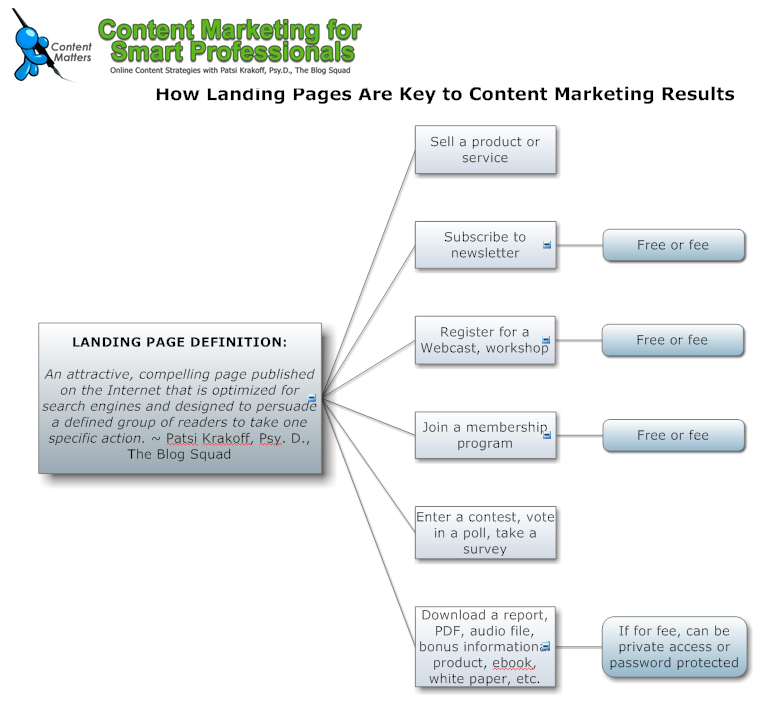 How do you get readers to take action? Short answer: a landing page. (Also known as a sales page, squeeze page)
How do you get readers to take action? Short answer: a landing page. (Also known as a sales page, squeeze page)
You can’t get results from all the content you’re creating and publishing on your blog, e-newsletter, social media sites, unless eventually you send people to a landing page and ask them to take action.
Otherwise, you may be creating a great brand, great thought leadership, great content… and so what? Sooner or later, you need to ask your readers to actually do something. You need a landing page to do that.
Landing page definition: An attractive, compelling page:
- Published on the Internet that is
- Optimized for search engines and
- Designed to persuade a defined group of readers
- To take one specific action
I know I’ve blogged about this a lot lately. I’m repeating myself because it’s so crucial to your online marketing efforts.
Oh, and I also want to show off my new diagramming tool… Smart Draw. Here’s what I created to illustrate a recent post:
Yet many professionals I know get hung up and stuck when it comes to creating a landing page. And we all know, what makes us stuck gets procrastinated!
Here are the common problems I hear from my clients:
- Not sure how to write content that persuades, especially when selling is involved
- Not sure how to format and design
- Don’t like the way hard-selling marketers format long sales letters
- Don’t have the tech skills to create a web page
All this is usually followed by attempts to create a landing page using the page formatting possibilities in WordPress. While this makes sense because it’s so easy and WP gets good search results, it’s actually full of traps.
The main traps are that a landing page shouldn’t be as wide as a blog for ease of reading, it shouldn’t look like your blog, it shouldn’t have any side-bar widgets or nav bar distractions.
A landing page should build trust because it is obviously a landing page, and not something else. There shouldn’t be any attempt to disguise it as a blog conversation, although you certainly want to talk informally and authentically in your content.
And, most importantly, it should be focused and clear what you want readers to do. It is designed to request an action, only one action, and that’s it.
Ah, yes, but what if you could use your WP blog to create such a landing page? More about that tomorrow.
How do you like my SmartDraw diagram?
P.S. If you agree with what I’m saying, have found landing pages to be a problem, and want a solution, read more about the WP Sales Page template developed by Suzanne Bird-Harris, here: PatsiPicksWPSalesPage.















Recent Comments